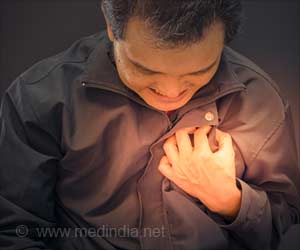A new optical imaging technique that could improve angioplasty has been developed in the USA. The technique is described in the journal Review of Scientific Instruments, which is published by the American Institute of Physics.
Angioplasty is a surgery commonly performed to treat patients with a partially or completely blocked coronary artery that restricts blood flow to the heart.It involves threading a slender, balloon-tipped tube from an artery in the groin to the trouble spot in the artery of the heart. The balloon is then inflated to compress the plaque that is blocking the artery. These balloons can also be used to deploy a stent, which is a wire-mesh tube sometimes inserted into the artery during an angioplasty procedure to keep it open and prevent reblockage.
In both cases, an optimal balloon design is critical to the success of an operation. Balloons can now be tested in a balloon deployment tester equipped with a system to monitor the outer diameter of the balloon, according to Guy Lamouche, research officer at the National Research Council of Canada.
With the goal of improving balloon deployment, the researchers investigated obtaining a more precise monitoring of balloon inflation by combining a deployment tester with an optical coherence tomography (OCT) imaging system. OCT allows imaging over a depth of a few millimeters in a tissue or material. By performing a pullback (rotation and translation) of a catheter OCT probe in a balloon, they discovered that it’s possible to obtain a precise measurement of the balloon’s diameter and thickness over the entire balloon.
“Combining OCT with a balloon deployment system provides an improved platform for angioplasty balloon development and can also be used in the development of next-generation minimally invasive devices for percutaneous — through the skin — coronary interventions,” says Lamouche. “It’s now possible to monitor balloon inflation within an artery phantom (model) or an excised artery to assess the efficiency of innovative balloon angioplasty or stent deployment procedures.”
The article, “Optical coherence tomography monitoring of angioplasty balloon inflation in a deployment tester” by Hamed Azarnoush, Sebastien Vergnole, Rafik Bourezak, Benoit Boulet, and Guy Lamouche will appear in the journal Review of Scientific Instruments.
Advertisement
Source-Medindia







